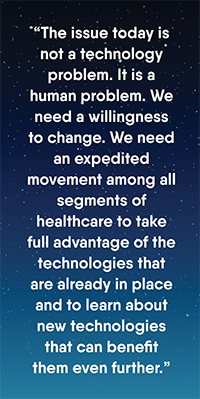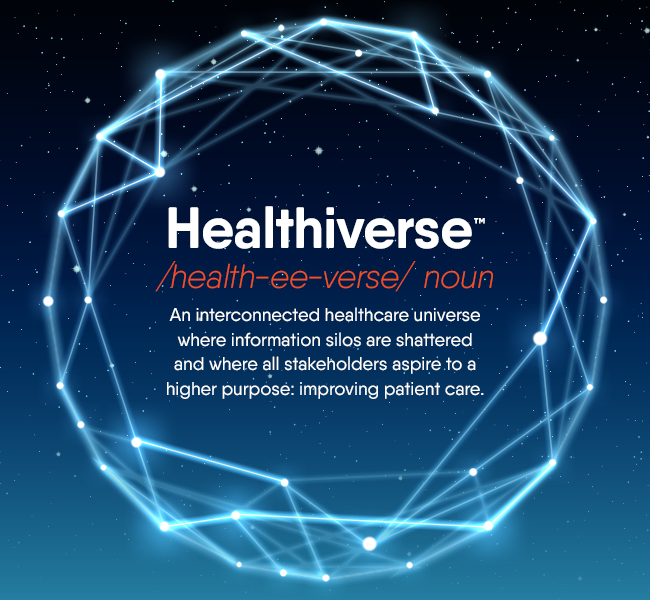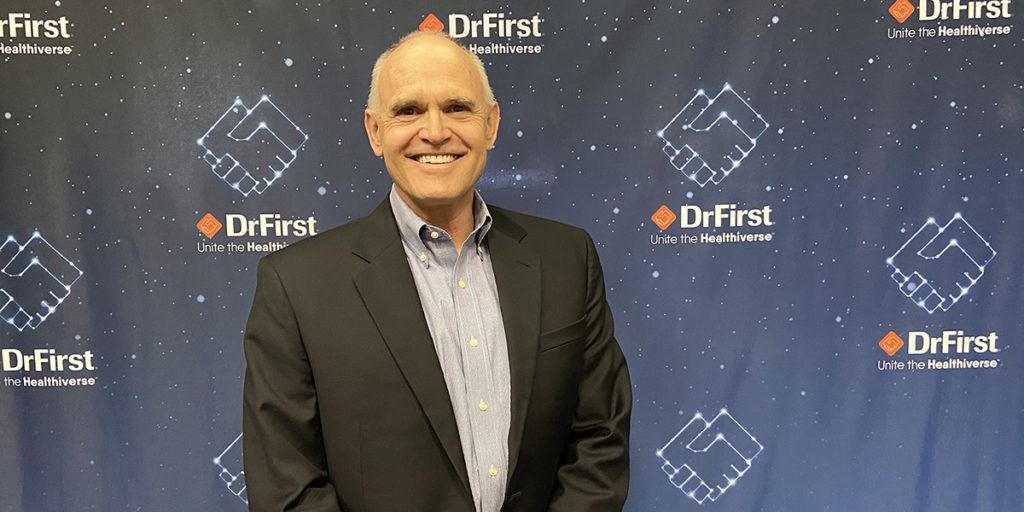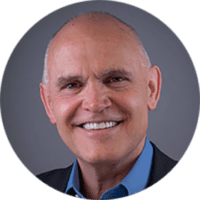Cam Deemer, President of DrFirst
Into the Healthiverse: How Collaboration and Information Sharing Can Revolutionize Healthcare
This blog is part of a series introducing the concept of the Healthiverse, explaining why it’s essential to eliminate the siloes between care team members, and exploring the benefits that a more united healthcare universe can deliver to different key stakeholders in the industry.
Over the last three decades, technology adoption in healthcare has been a slow, deliberate process, but recently that all changed. Driven by the urgency of the global COVID-19 pandemic, we have seen astounding growth in the adoption of technology.
The virus has been a catalyst for change, and it has the potential to lock in permanent improvements in the way healthcare is delivered—enhancing workflows with increased communication and data-sharing among providers and resulting in better care and reduced risks to patients. This interconnected healthcare environment is at the core of DrFirst’s mission to “Unite the Healthiverse.”
A Disconnected History
From the early days of healthcare, medical histories, prescriptions, and treatment plans have been recorded on paper. Even as we entered the modern era of medicine over the last 50 years, paper continued to play its role as the preferred method of documentation. Unless medical care teams worked in the same office or facility, the ability to share patient information was limited, which obviously created problems.
Because different members of the patient’s care team operated within separate information silos, isolated from each other and without access to one another’s treatment plans or prescription histories, it was up to the patient to connect all the dots. This often resulted in miscommunication and information gaps. Medications were overprescribed or contraindications were overlooked, treatments were redundant or not carried through properly, and the result was patient frustration, sometimes unintentional harm, and occasionally death.
Although the more recent move away from paper and toward electronic health records, e-prescribing, and patient portals was intended to overcome the shortcomings of the past, individual members of the care team too often remain siloed. Everyone may be using technology, but freeing patient data from manila folders only to lock it up in non-interoperable applications isn’t the kind of progress we expected from med-tech.
And there’s a little-known secret around healthcare technology: many tools are available and widely adopted, but utilization continues to lag. For instance, our industry claims that 80–90% of providers are e-prescribing, but a major pharmacy chain shared with me recently that over a third of their prescriptions still arrive via phone, fax, or paper scripts. Providers need to make workflow and procedural changes so that they utilize electronic tools more consistently. In addition, we all need to embrace and adopt new technologies and solutions that can connect the currently incompatible applications used by care team members in different facilities.
Navigating the Way Forward
Transforming an industry as large as healthcare is a complex process, but it’s possible. In other industries, we have seen the kind of rapid changes that not only solve fundamental problems but also take us places we didn’t realize we wanted to go. A simple analogy is navigation.
 A couple of years ago, I had the opportunity to take a road trip to North Dakota with my father-in-law. “How are you planning to go?” he asked as we buckled up and headed out. “I don’t know,” I said. “I guess however Google tells me to go.” I could feel my father-in-law’s stare. “We better buy a map,” he said. It wouldn’t be the last time he wanted to buy a map. We stopped to buy a map in every state. He unfolded, consulted, and refolded those maps mile after mile, and I drove roads I’d never seen, to arrive at a house I’d never visited, guided solely by attentive voice of Google Maps. But I understood how he felt; I remember the days when paper maps were the gold standard for navigation.
A couple of years ago, I had the opportunity to take a road trip to North Dakota with my father-in-law. “How are you planning to go?” he asked as we buckled up and headed out. “I don’t know,” I said. “I guess however Google tells me to go.” I could feel my father-in-law’s stare. “We better buy a map,” he said. It wouldn’t be the last time he wanted to buy a map. We stopped to buy a map in every state. He unfolded, consulted, and refolded those maps mile after mile, and I drove roads I’d never seen, to arrive at a house I’d never visited, guided solely by attentive voice of Google Maps. But I understood how he felt; I remember the days when paper maps were the gold standard for navigation.
The truth, of course, is that before Google Maps, people traveled. People found their way to destinations, but it was a cumbersome process of unwieldy paper maps, asking for directions, and sometimes simple dead reckoning. However, with the introduction of GPS, there was a sudden change in the way people traveled. They no longer needed to try to drive a car and read a map simultaneously or ask strangers for help. Instead, a voice and a display reliably explained exactly where to go and what to do.
Then Google Maps came along, and basic GPS became a thing of the past. Now, travelers could optimize their routes beforehand to avoid tolls or rush hours; they could estimate the travel time precisely after factoring in road construction and traffic flows; they could search for places to eat or get gas. Most importantly, they could make changes on the fly to improve their trip with the help of real-time data and artificial intelligence (AI).
Healthcare IT is ready for this type of change. By providing all members of a patient’s healthcare team with accurate, up-to-date information and data, delivered when and where they need it, we can empower them to make better, more informed decisions that result in better care and outcomes for the patient. So, where are we in our progress toward a more united healthcare universe? I believe we are entering the “GPS” phase.
We have created electronic tools that give us a command of the information we need, when we need it, to more effectively guide a patient to a good outcome. But like GPS, we are operating largely alone. With paper, we kept track. With modern healthcare applications and the services to which they connect, we have learned to trust the guidance of data and algorithms, to determine the safest, most efficient, most impactful care plan for the patient. This replaced the need to pull reference documents off the shelf and do every bit of research ourselves.
Our next step is a big one, to step past “GPS” and begin to benefit from acting together, not alone. Navigation tools like Google Maps and Waze revolutionized travel by harnessing the power of collective experience to benefit everyone individually. If you encounter road construction, your calculated route automatically changes to move you around it smoothly. Find a speed trap? It shows up on the route so you can slow down.

Healthcare IT’s next big change is embracing this collective mind and experience and allowing us to apply it with the patient in front of us. From recording to information access, to the capture, exchange, and meaningful application of the collective experience of a patient’s entire care team and the stakeholders involved in providing the resources and funding for that care, this is the journey we are on as an industry.
The issue today is not a technology problem. It is a human problem. We need a willingness to change. We need an expedited movement among all segments of healthcare to take full advantage of the technologies that are already in place and to learn about new technologies that can benefit them even further. The coronavirus has posed a terrible challenge to healthcare, but perhaps it will also be a catalyst to positive change, a necessary push to move the industry from GPS to Google Maps.
The destination is the same as always—improved healthcare for the patient—but we can get there more safely and more efficiently. Only when all healthcare stakeholders embrace this new reality will we be able to unite the Healthiverse, making the care team more informed, more collaborative, and more effective, producing the best possible patient outcomes.
Learn more about the Healthiverse and how new technologies are making all members of the care team more collaborative, informed, and connected.

The “Healthiverse” is a term coined by DrFirst to describe our vision of a united healthcare universe where everyone is connected in real-time to each other and to the information they need, so patients get the best care.


















